Chapter 3: Focsani & Odobesti
Beyond Dreams of Aberystwyth | The Book
Focsani is nowhere on the Romanian tourist trail. However I had recently found out that a great-great-grandfather of mine – Israel Sibalis – was buried in a cemetery near there, the village of Odobesti. A newly discovered distant cousin (you find these when you start your family history) had emailed me a family gravecard (see picture) with the details. Wow! I didn’t even know I had a great-great-grandfather called Israel Sibalis… (What is it with this family and silly names?) This Israel Sibalis was the grandfather of my grandmother Polly. He died in 1894 and never made the journey to the UK from Romania. (His wife Janie did and died in London in 1906.) So that was why I was on a train to Focsani, 120 miles north of the capital Bucharest.
I had been able to phone the president of the Jewish community there – Mircea Rond – from the train. ‘I will meet you at the station,’ he said. Fantastic. Mircea didn’t speak brilliant English but I got a great vibe from him instantly. Though not entirely sure what was happening or where we were going I got into his car at the station and was happy enough to go with his flow till I found out. He took me to the headquarters of the Jewish community – the synagogue at Focsani with a side room which functioned as a scruffy office-cum-community space. It was cool in there after the heat outside (lovely consistent mid 20’s while I was in there) and the room felt well-used and well-loved. There was a calendar on the wall from the Jewish State Theatre in Bucharest.
Mircea’s good friend Comon Nicolae arrived shortly wearing an ornate gold cross – clearly good Christian-Jewish relations here. Mircea poured us all a small plastic cup of coke and cut us each a large slab of cake which his wife had made, and without further ado the 3 of us set to work poring over huge ancient record books, records of the graves in Focsani and Odobesti Jewish cemeteries.
It quickly became disappointingly clear that the records are incomplete. One book was a log complied from a relatively recent (1970’s?) field study of surviving and visible graves of one graveyard. The other books were older but only started from 1909-ish (too late for Israel Sibalis who died 1894) and with corners of pages worn or torn away. So much has been lost and destroyed, it was heart-breaking. And there are no records of births or marriages which is what you need really to put the pieces of the jigsaw together and go back any further.
Despite that it was clear from these books that Sibalis’s had lived and died here and even though we couldn’t find a record that matched the Israel Sibalis I was looking for that doesn’t mean he – or any other relatives of mine – were not here. There were other Sibalis and Feldman graves (my grandmother’s maiden name) and I wanted to see the graveyards and anything else ‘Jewish’ anyway while I was here.
It was another hot day and Mircea drove me to Focsani Jewish Cemetery. While he was talking to his friend at the gate he pulled some plums from a tree and put them paternally into my hand. He left me with Comon Nicolae who donned his ‘scruffs’ and spent the rest of the morning being a total star, clambering over stones, getting into a sweat and digging through the undergrowth helping me find the graves I had listed with the family names.
I like being in graveyards– I know that sounds weird. Maybe it depends on the graveyard. These were the peaceful dead. It was a sunny day and many of the stones were beautiful, some inlaid with a photograph, what must have been a fashion for a time. There were beautiful carvings going back at least a couple of hundred years, though it was hard to tell as the older ones were in Hebrew.
I don’t know if any of my family are buried there but I did feel peaceful. These were the peaceful dead – the peaceful Jewish dead specifically – people who had died naturally and who been loved and honoured with gravestones and ceremony by their loved ones.
The overgrown-ness is of course very frustrating when this is almost the only way of tracking your family back. You’d have to have a Hebrew scholar and an expert Romanian historian to clear and translate every single grave to really know what – or who – was there. And no one has the time or money for that, least of all in Romania –even less the small and aging Jewish communities there. Family history trekking is an indulgence of a more affluent and comfortable people, including me. The graveyard was vast and mostly looked like a field, but is actually graves just completely covered by years of natural overgrowth.
But isn’t that the way of things? When someone dies – like my Dad did a year ago – people feel sad and you want to mark that. You have a ceremony and may put up a stone, and want to remember and feel. But eventually that loss doesn’t exist anymore – time passes, later generations come, people forget, the bereaved pass on themselves. Old graveyards can feel sad to me, not because they are full of loss but because the loss has gone now and the graves seem kind of lonely for it to come back. We are all forgotten eventually, that’s the way it is. We put my Dad’s ashes under a tree and I’m glad because when we’re all gone and the marker has got lost in the mists of time there won’t be a gravestone to bother future generations with but at least there will be a tree.
When I got back to Foscani synagogue later the table was surrounded by a group of older Jewish people who looked fragile and slightly out of it. They were clearly asking Mircea to help them with something. ‘I have a problem,’ he said to me. It was impossible to know what was going on. Mircea was talking loudly and animatedly but not unfriendly. He told me when he first came to Foscani 10 years ago ‘there was nothing’ – as in no Jewish community. There were around 100 Jewish people in the area and he began by meeting people, encouraging them to get together and organising activities. His role as ‘president’, as far as I could make out, seemed to be a self-imposed one, one that is totally unpaid and largely involves helping people and putting on events, including ones to bring together Jewish, Muslim and Christian people. Mircea talked to everyone – which may be a general Romanian thing as Marcel in Bucharest did it too – a friendly word with everyone, much more animated and physical than Brits – an easy handhold, the squeeze of the shoulder. Mircea gave a lot of support especially to older people who are poor and seem to form the majority of the Jewish population in Romania. ‘Problems, problems!’ he says.
Mircea’s wife Harieta was there too that day. She thinks he spends far too much time sorting out other people’s problems! She was keen to talk to me as much as possible in English. She told me about their son who had recently married a woman who converted to Judaism and showed me the photos on facebook! It was a proper Jewish wedding and looked like a grand do in a posh restaurant in Bucharest. The older people I met in Romania – Jewish and otherwise – have a sadness about their country – their children go to Bucharest or if possible abroad to find work. Mircea said in Focsani ‘there are old and young, nothing in between.’ He would have liked his son to have stayed in Foscani.
Afterwards he drove me to Odobesti Jewish Cemetery. I had not been able to find out precisely if or where my great great-grandfather may be buried here but I was keen to see it. An older Christian woman met us who lived in the small house at the gate, keeping an eye on the cemetery. As Mircea talked to her he pulled some grapes from one of the vines and again gave some to me. He and the woman sat and talked and left me to wander around the graveyard alone. The natural beauty of the place fed me after the previous few days in the city – the sun, the earth beneath my feet, the sounds of birds, and again, the sense of peace. The woman gave me walnuts from her tree as we left.
Finally Mircea then showed me Odobesti synagogue, derelict and boarded up. As Harieta had said, ‘It is broken’. Did my great-great-grandfather and other relatives worship here? Or lived here? – this was the old Jewish quarter. There are only 6 Jewish people living in Odobesti now, 2 of which are Mircea and Harieta.
As we drove back to Focsani Mircea pointed out a second Odobesti Jewish Cemetery but this one really did look like a field! Maybe my great-great-grandfather was in there?! But how would you ever know? And did it – really – matter? This was a ’homecoming’ of sorts, but it was also a journey to an alien land I would never have thought of coming to if it wasn’t for this connection. I never even knew my grandmother who was born here, who died way before I was born. (In 1952, the year Jackie was born in fact.) All I knew of her from my Dad was that she was the only member of his family that he really loved. He said when she died he had no reason to stay in Britain and so he left, went to the Far East – that was how he told it anyway. So it’s not like I have a sense of this country from any personal stories and no one in subsequent generations, least of all my Dad knew or spoke a thing about it.
I felt very touched by all the time and help Mircea, Harieta and Coman Nicolae had given me, looking things up and showing me around. Mircea is clearly a good man, giving his time totally to others, including me over the 2 days I was there. They seemed familiar with strange westerners turning up or emailing from Israel, America or UK, in search of roots. Maybe if I had found something really specific relating to my family I would have felt more, but it was impossible to get a sense of what the lives of my ancestors may have been here, or where my affinity with this community realistically lay even if I do have genealogical ‘roots’ here. Maybe I would feel more in Braila, where my grandmother was born – where I went next.
Back to Chapter 2
Forward to Chapter 4
Full Table of Contents
If you have enjoyed this and would like to see ‘Beyond Dreams of Aberystwyth’ go further please click on this link to see what you can do to help make that happen! You can also submit comments below. Thanks for reading.

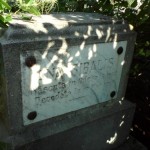
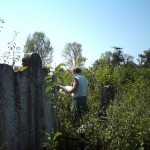

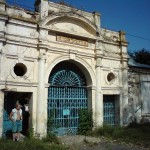
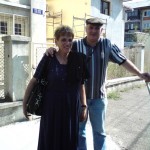


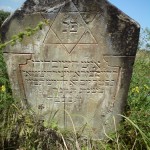
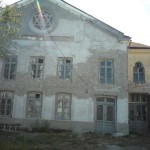

Leave a Reply